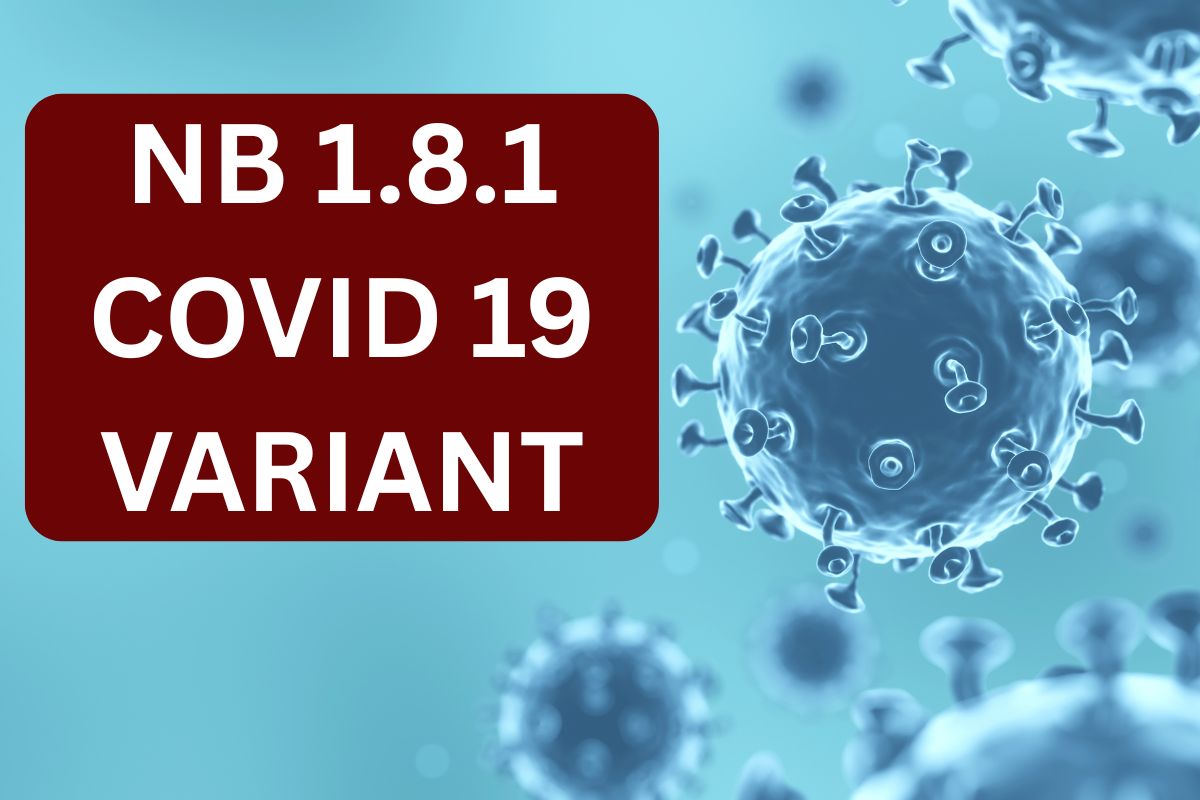A descendant of Omicron, NB 1.8.1 Covid 19 Variant, has been identified in the US as of May 2025 and has been connected to recent increases in COVID-19 cases across Asia. Since its initial discovery in China, NB.1.8.1 has quickly emerged as the most prevalent strain, contributing to a notable rise in COVID-19 cases. Other Asian nations, like Singapore, Hong Kong, and, more recently, the US, have confirmed its existence through airport screening procedures. There are 1009 Covid 19 NB 1.8.1 Variant Cases In India and the number may increase in coming days. NB.1.8.1 has been classified as a SARS-CoV-2 Variant Under Monitoring by the World Health Organisation due to its rising worldwide incidence. You should check the NB 1.8.1 COVID-19 Variant Symptoms and then see whether you are safe from it or not.

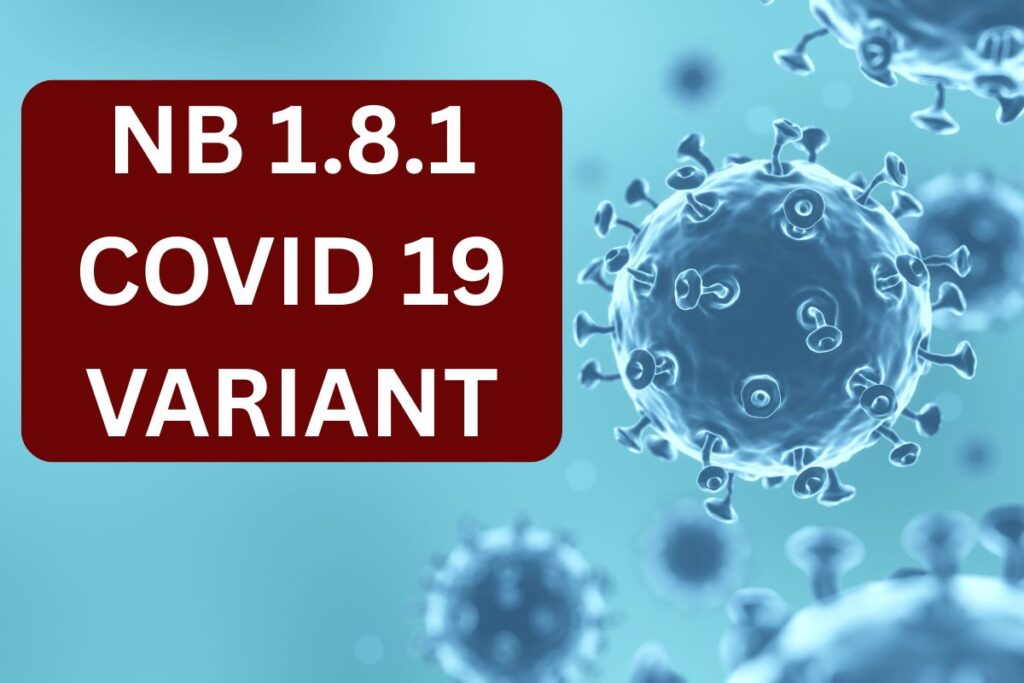
NB 1.8.1 Covid 19 Variant
NB 1.8.1 Covid 19 Variant has been designated as a SARS-CoV-2 Variant Under Monitoring by the WHO – World Health Organisation due to its increasing worldwide incidence. This variety is derived from the recombinant variant XDV 1.5.1, and the first sample of it was collected on January 22, 2025. On May 23, 2025, it was formally designated as a VUM. When compared to certain previous variations, NB.1.8.1 Covid-19 Variant has shown a higher transmissibility rate. This version may have a higher capacity to bind to human cells, which could result in higher infection rates, according to preliminary findings. The fluctuation has been observed in travellers arriving at major U.S. airports, including those in Washington, California, New York, and Virginia. Although there has been a rise in hospitalisations and cases in certain nations where NB.1.8.1 is prevalent, available evidence does not suggest that this variant causes more serious illness than other variants.
Covid 19 NB 1.8.1 Variant Cases In India
| Article | NB 1.8.1 COVID-19 Variant, Know Symptoms, Precautions & Treatment |
| Variant | NB 1.8.1 COVID-19 |
| Detected In | 2025 |
| Symtoms | Refer to the article |
| Covid 19 NB 1.8.1 Variant Cases In India | 1009 cases |
| Active Cases | As per the report, 1 case of this variant was reported in India |
| Category | News |
NB 1.8.1 COVID-19 Variant Symptoms
In general, NB.1.8.1’s symptoms are similar to those of earlier Omicron variants. A sore throat, exhaustion, a slight cough, fever, muscle aches, and congestion are among the symptoms that are frequently mentioned. Persistent low-grade hyperthermia, which is distinct from a usual fever and occurs when the body temperature is higher than normal due to a failure in thermoregulation, has been observed in certain people. Headaches, nausea, appetite loss, and gastrointestinal problems are some of the other symptoms that have been recorded.
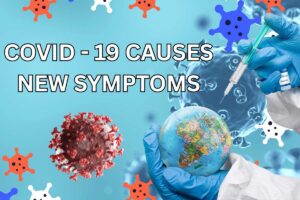
NB 1.8.1 Covid 19 Symptoms:
- Mild to moderate fever
- Sore throat
- Nasal congestion
- Fatigue
- Muscle pain
- Headaches
- Gastrointestinal issues like nausea and diarrhoea
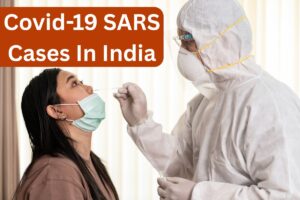
Precautions Against the NB 1.8.1 COVID-19 Variant
Precaution is better than a cure! According to proverbs, it is advised that people take the following precautions to avoid contracting this common illness:
- Wear a mask: When in crowded places or among sick individuals, wear a mask that fits well.
- Maintain good hygiene by often washing your hands with soap and water or by using hand sanitiser.
- Steer clear of close contact: Remain physically apart from others, particularly if they’re ill.
- Get vaccinated: Make sure you have had the most recent COVID-19 shots and boosters.
- Keep yourself updated: Observe regional health regulations and keep up with any new changes.
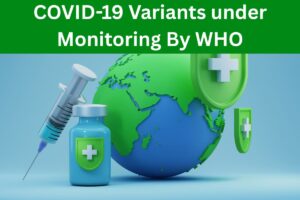
Treatment Of NB 1.8.1 Variant of COVID-19
Although there aren’t many cases of this variation, the following treatments are still recommended:
- Mild cases: To treat mild cases, isolation is usually necessary to stop the spread of the illness and to manage symptoms like fever and cough.
- Severe cases: Hospitalisation and antiviral drugs may be part of the treatment for severe cases.
- Vaccination: Vaccination continues to be an important preventative measure against serious illness and hospitalisation.
- Antiviral drugs: High-risk individuals may be prescribed antiviral medications such as Paxlovid.
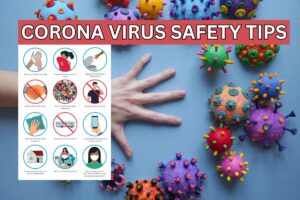
Current Situation of NB 1.8.1 Variant of COVID-19 In 2025
- Detection: One case of the variation was reported in April 2025, and it has been found in Tamil Nadu. It is found in more than 20 countries across the world, including the US, Japan, and South Korea.
- Transmission: Mutations like A435S, V445H, and T478I present in the variant may make it more transmissible. Nevertheless, there is no proof that it is more dangerous or lethal than previous Omicron subvariants.
- Prevalence: With 257 active cases recorded in 20 states and Union Territories, India is now experiencing a small increase in COVID-19 cases. The states with the most cases include Kerala, Tamil Nadu, Maharashtra, and Delhi.
- Government Reaction: Hospitals have been urged to stock up on oxygen supply, ventilators, and trained personnel, and the Union Health Ministry is keeping an eye on the situation. Additionally, emphasis is being placed on vaccination and booster programs, especially for high-risk populations.
- Generally, public health experts are telling people to continue preventive measures, stay up to date on vaccines, and avoid needless gatherings, so even while the situation is being closely monitored, there’s no need to panic.
FAQS On NB 1.8.1 Variant of COVID-19
The variant may have increased transmissibility due to certain mutations, but there’s no conclusive evidence.
It is anticipated that current COVID-19 vaccinations will continue to be effective in preventing hospitalisation and severe illness brought on by the NB.1.8.1 variant.
Symptoms are typically mild and similar to earlier Omicron variants, including sore throat, cough, and fever.
